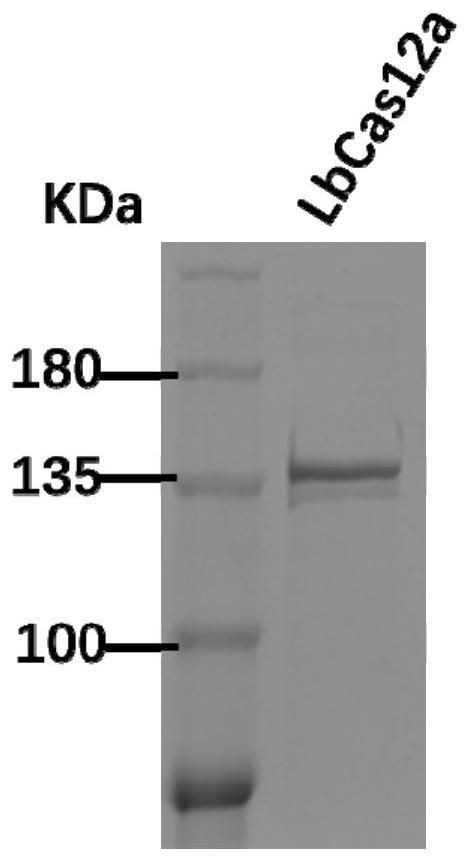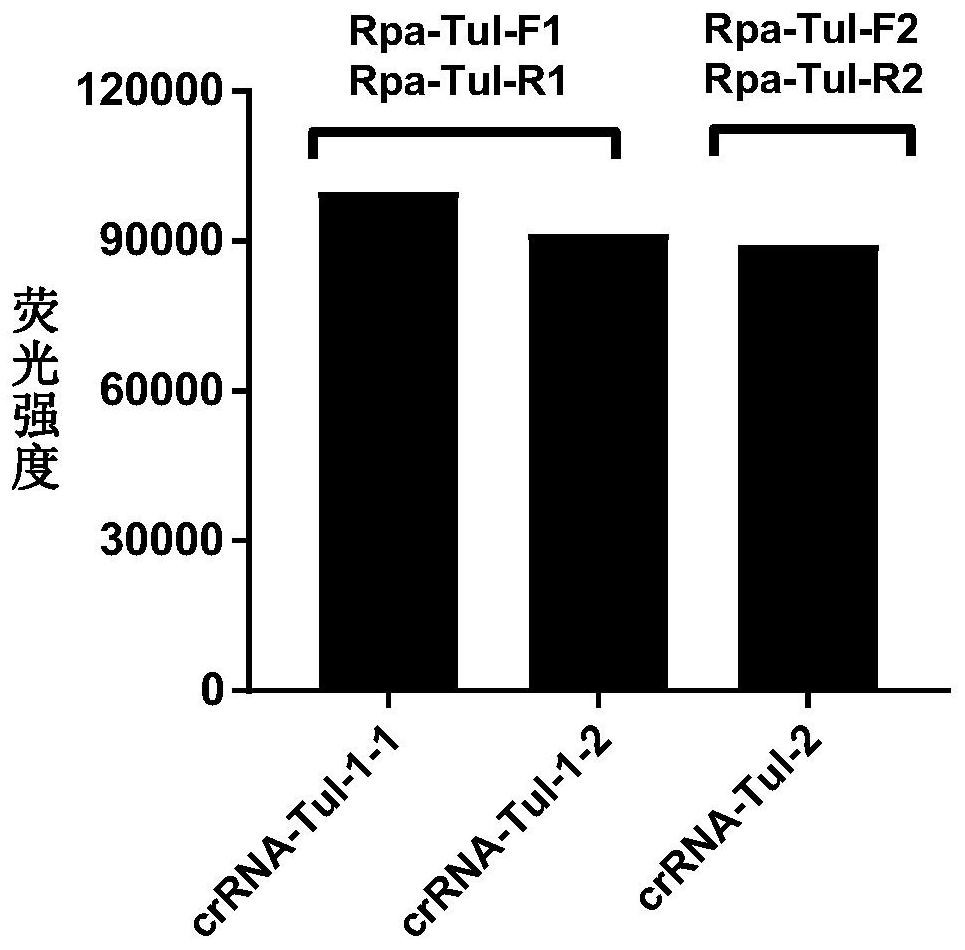CRISPR-Cas12a detection primer set and its application for tularensis
A technology of tularemia and primer set, which is applied in the biological field, can solve the problems of inability to improve the sensitivity, and achieve the effects of short detection time, good sensitivity and broad application prospects
- Summary
- Abstract
- Description
- Claims
- Application Information
AI Technical Summary
Problems solved by technology
Method used
Image
Examples
Embodiment 1
[0052] Example 1, Design and Screening of CRISPR-Cas12a Detection Primers for Tularemia
[0053] 1. Sequence design
[0054] 1. Target sequence selection
[0055] On the basis of previous studies, the inventor selected the conserved sequence of the main membrane protein precursor (tul4) gene of Francisella tularensis as the target sequence (as shown in SEQ ID No.1) after repeated screening and comparison. As the specific conserved sequence of Francisella tularensis, the sequence can be specifically detected for Tularensis tularensis.
[0056] 2. Design of amplification primer pair and crRNA
[0057] For the specific conserved sequence of the tul4 gene of Francisella tularensis (as shown in SEQ ID No.1), many theoretically feasible RPA amplification primer pairs and crRNA were obtained by software design, but a considerable part of the effect was verified by scientific experiments Table 1 shows the sequences that are not good and some of them have good effects.
[0058] Tab...
PUM
| Property | Measurement | Unit |
|---|---|---|
| Sensitivity | aaaaa | aaaaa |
Abstract
Description
Claims
Application Information
 Login to View More
Login to View More - R&D
- Intellectual Property
- Life Sciences
- Materials
- Tech Scout
- Unparalleled Data Quality
- Higher Quality Content
- 60% Fewer Hallucinations
Browse by: Latest US Patents, China's latest patents, Technical Efficacy Thesaurus, Application Domain, Technology Topic, Popular Technical Reports.
© 2025 PatSnap. All rights reserved.Legal|Privacy policy|Modern Slavery Act Transparency Statement|Sitemap|About US| Contact US: help@patsnap.com



